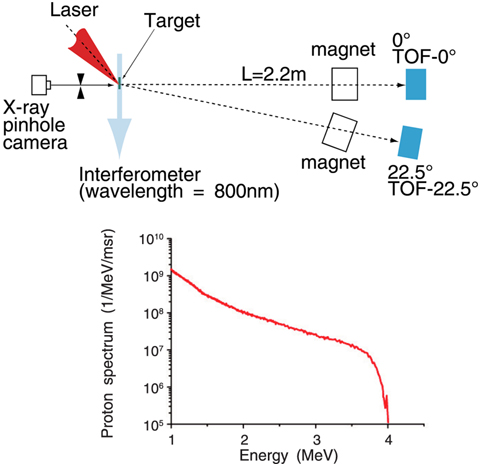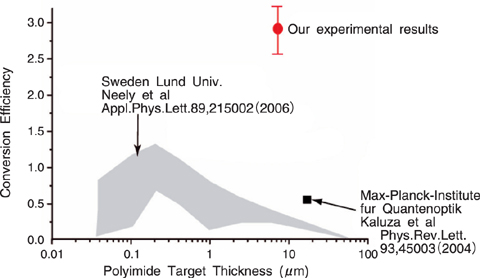
Fig.4-12 Experimental set up and the energy spectrum of the proton beam

Fig.4-13 The experimental results obtained by the ~1 J class laser system
A high energy proton beam is produced by the interaction between a short-pulse high intensity laser and a target material such as metal or plastic. We can down size the accelerator using this laser-driven proton beam, because the laser-driven proton beam has very small (~μm) acceleration field compared with that of the conventional accelerator. However, for the practical use of this laser-driven accelerator in industry or medicine, we have to obtain the necessary proton dose within a limited time period with compact laser system. We have to increase the energy conversion efficiency from laser to proton beam in order to obtain a higher proton number per laser shot. In order to obtain conversion efficiency improvement of more than a few %, a large laser system whose energy is more than a few tens of J is needed. The energy conversion efficiency with a small laser system (~1 J class) is limited to less than 1%.
We have carried out an experiment in collaboration with GIST in Korea, CRIEPI, and ILE. We produced a proton beam with maximum energy up to 4 MeV with good conversion efficiency, by irradiating a polyimide 7.5 μm target with laser pulses whose peak intensity and pulse width were 50 TW and 34 fs, respectively, from a compact 1J class laser system (Fig.4-12 and Fig.4-13). The conversion efficiency from laser to proton was more than 3%. The peak current was 0.3 MA, which is more than 2 orders of magnitude higher than those obtained by a conventional accelerator with energy on the order of a few MeV.
This realization of a laser-driven proton beam with high conversion efficiency, will surely contribute to the application of the laser-driven proton beam to medical as well as industrial fields. This increase in the conversion efficiency will lower the quantitative demands made upon the laser (presently laser energy of 10 J, repetition rate of 100 Hz). This makes it easier to reach our goal of realizing a laser-driven proton accelerator.
We have shown that a compact laser system can accelerate the proton beam very efficiently. This paves the way toward the application of the laser-driven proton beam in industrial as well as medical fields. However, problems still remain. First of all, we have to increase the energy of the proton at least to 80 MeV in order to apply the laser-driven proton beam to radiation therapy, if no additional accelerator is attached. In the next step, we have to develop the transport and irradiation system of the proton beam, where the spatial distribution and number of the protons as well as the energy is optimized, in order to supply the necessary and sufficient dose to the diseased part of the patient. We are now developing not only the source of the laser-driven proton but also the transport and irradiation systems, in order to realize the laser-driven proton accelerator.